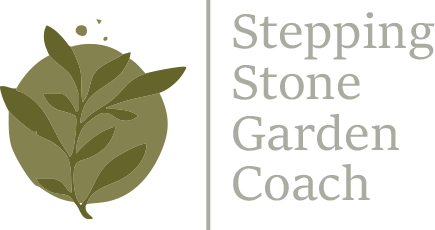 If the heat of July has you wilting, your garden might be feeling it too. But here’s the good news: while much of the country is still deep in summer mode, Central Florida gardeners can already begin preparing for fall—our most bountiful growing season.
If the heat of July has you wilting, your garden might be feeling it too. But here’s the good news: while much of the country is still deep in summer mode, Central Florida gardeners can already begin preparing for fall—our most bountiful growing season.
Yes, now’s the perfect time to plan—and even start planting—your fall garden.
What Can You Start in Mid-July?
While it’s still too hot to transplant many fall crops outdoors, now is the time to start certain seeds indoors (or in a protected shady spot outside). Here are a few crops you can start now:
Broccoli – Start seeds indoors in trays; transplant in late August to early September.
Cauliflower – Like broccoli, it needs cooler nights to thrive. Start indoors now.
Cabbage – Can be started from seed now and transplanted in about 4–6 weeks.
Collards & Kale – Can be started now for transplanting in late summer.
Lettuce – Start heat-tolerant varieties indoors or in a protected spot; fall is peak lettuce season here.
Tomatoes & Peppers – If you’re planting a fall crop, start seeds now. Use shade cloth to protect young seedlings once planted out.
What Can You Do Now to Prepare?
Even if you’re not ready to plant yet, you can take smart steps now that will pay off big later:
1. Take Inventory of Your Garden Space
Is anything spent and ready to be pulled out?
Can you amend the soil or rotate crops for better results?
2. Prep Your Beds
Remove summer debris and replenish your soil with compost or worm castings.
Consider adding mulch to retain moisture and suppress weeds until you plant.
3. Check Your Seed Stash
Order seeds now to avoid late-season shortages.
Choose varieties bred for Florida’s warm fall and mild winters (UF/IFAS is a great resource for recommended cultivars).
Choose Varieties Bred for Florida’s Unique Climate
One of the biggest mistakes new gardeners make is picking seeds based on pretty photos on the packet—not realizing that not all plants thrive in Florida’s unique fall conditions.
Here in Central Florida (Zones 9b–10a), we have:
Long, hot summers
Mild but unpredictable winters
And shorter daylight hours in the fall—so it’s important to choose the right varieties of vegetables, herbs, and flowers that are bred or proven to perform well in our region.
Why It Matters:
Many seed catalogs are tailored for northern climates. But Florida gardeners need varieties that:
Germinate in warm soil
Mature quickly before winter cold snaps
Resist humidity and common pests
Where to Find Florida-Friendly Varieties
Here are some trusted resources to help you choose what to plant in your fall garden:
UF/IFAS Florida Vegetable Gardening Guide
This comprehensive chart from the University of Florida Extension Service lists the best vegetables to grow by month and region:
https://edis.ifas.ufl.edu/publication/VH021
Florida Vegetable Variety Recommendations
Curated by UF researchers, this resource lists tested varieties for everything from broccoli to tomatoes. Look for entries like ‘Everglades’ tomato or ‘Tendergreen’ beans. https://edis.ifas.ufl.edu/publication/HS1215
Florida-Friendly Landscaping Plant Guide
Though this guide includes more than veggies, it’s a great tool for herbs, native edibles, and pollinator-friendly companions.
https://ffl.ifas.ufl.edu/plants/
My Favorite Tried-and-True Varieties for Fall in Central Florida:
Broccoli – ‘Waltham 29’, ‘Green Magic’
Cabbage – ‘Bravo’, ‘Copenhagen Market’
Kale – ‘Lacinato’ (Dino), ‘Red Russian’
Lettuce – ‘Parris Island Cos’, ‘Black Seeded Simpson’
Carrots – ‘Danvers 126’, ‘Nantes’
Beans – ‘Provider’, ‘Contender’ (great for heat)
Tomatoes – ‘Everglades’ (super hardy), ‘Florida 91’
Squash – ‘Seminole Pumpkin’ (Florida native!)
Where to Shop for Seeds Locally or Online
Look for seeds at nurseries that specialize in Southern or Florida-adapted plants. A few I recommend:
Southern Exposure Seed Exchange
Johnny’s Selected Seeds – South region filters
Grower’s Solution – Florida Vegetable Seeds
Local feed stores or farmer co-ops often carry Florida-adapted seeds too!
Final Tip: Don’t Wait to Order!
Popular varieties often sell out by early fall, so order early and store your seeds in a cool, dry place until planting day.
4. Sketch Your Garden Layout
Decide what you want to grow and where.
Companion planting can help you use space wisely and reduce pests naturally.
5. Start a Garden Journal
Tracking planting dates, varieties, weather patterns, and harvest yields can help you improve year after year.
Bonus: Herbs to Start in July
Basil – Loves heat and will keep going well into fall.
Rosemary – Start from cuttings or transplant small plants now.
Thyme and Oregano – Can be planted now and will carry into winter.
Chives – Easy to start from seed or division.
A Final Word on Florida’s Fall Magic
In Central Florida, fall is arguably the best time to garden. Cooler temps, fewer pests, and a huge range of crops that thrive. But it all starts now, in the heat of summer, with a little planning and some early prep work.
So pour yourself some iced mint tea, find a shady spot, and start dreaming. Your fall garden is just around the corner—and it’s not too late to grow something beautiful.
